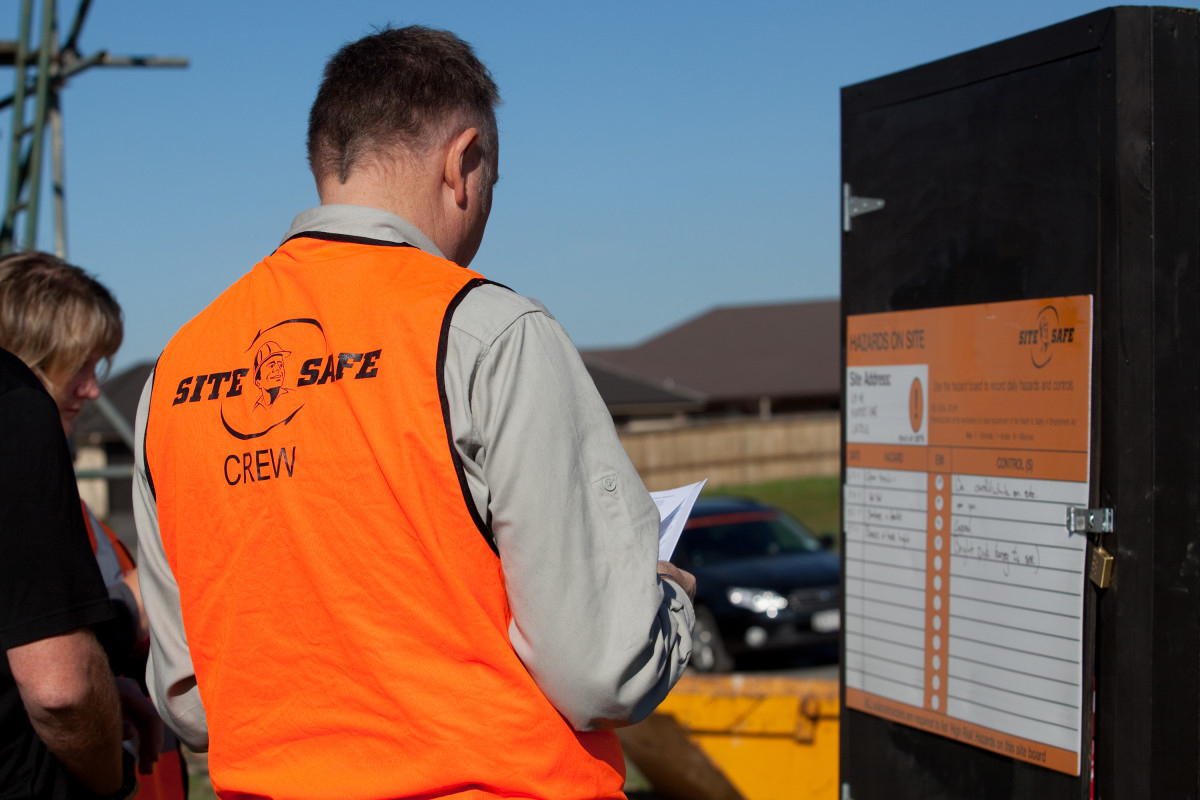Successful onsite hazard management
01 Aug 2013, Prove Your Know How, Safety

Under New Zealand’s Health and Safety in Employment law, employers are advised to adopt “all practicable steps” to ensure site safety. Given this is a relatively vague term, Site Safe has outlined what these steps could be.
A hazard is an activity or event that could cause harm. When assessing a hazard, the following must be considered:
- The nature and severity of any injury or harm that may occur.
- The degree of risk or probability of injury or harm occurring.
- How much is known about the hazard and the ways of eliminating, isolating or minimising it.
- The availability and cost of safeguards.
The following steps are recommended:
- Identify the hazard.
- Eliminate, isolate, or (as a last option) minimise the hazard.
- Train and supervise your employees to deal with hazards.
- Engage your employees – alert them to any known hazards and encourage them to inform you of any other hazards they see.
- Register all accidents and incidents and understand the hazard.
- Investigate accidents, so you can determine the root cause and then improve your health and safety systems where needed.
The following three health and safety tools will not only help manage the hazard but also engage your employees in health and safety.
1. Hazard register
- Used by employers and contractors to list onsite hazards and how they will be controlled.
- Used by employees and subcontractors to inform their employers or main contractor of any new hazards – workers should be encouraged to report hazards.
- Used to induct new people onto site, to make them aware of onsite hazards.
- A hazard register should be submitted and approved before commencing work.
- Hazards listed should be checked regularly and kept up to date as situations change.
2. Hazard board
- List of onsite hazards displayed on a board at a site’s entrance.
- The board is simple, easy to read and reminds workers of the hidden and obvious hazards on site.
- The board should encourage all subcontractors/employees to flag the hazards associated with their tasks, so other people on site are made aware.
- The hazard board should be updated daily.
3. Task analysis
- Also known as a ‘method statement’ – your step-by-step guide on how to carry out a task safely.
- Details a specific task’s hazards, rather than listing the hazards and controls that are on a particular site.
- To create a task analysis, systematically go through a task, outline each step, list the potential significant hazards associated with that step and explain how each hazard can be controlled.
- Task analysis increases productivity, as it ensures the right person, plant and process is used and engages staff with health and safety.
- It should be completed prior to starting work and be reviewed and approved by the main contractor onsite.
“Engage your employees – alert them to any known hazards and encourage them to inform you of any other hazards they see
Identification is only the beginning
Identifying and controlling hazards is only the start. It’s also important to make sure your workers are trained, supervised and/or competent to carry out tasks onsite. If an accident or incident does occur, it is also important to investigate and register the event – and learn from it to improve your health and safety system.
Notifiable work
If your task is deemed ‘notifiable work’, you must notify the MBIE Central Response Team in the following ways by going to www.business.govt.nz/healthandsafety, calling 0800 20 90 20, or emailing healthsafety.notification@dol.govt.nz
Notifiable work in construction:
(a) Any restricted work, as that term is defined in regulation 2(1) of the Health and Safety in Employment (Asbestos) Regulations 1998.
(b) Any construction work of one or more of the following kinds:
- Where workers could fall 5 m or more, excluding work on a two-storey house, or work on a power or telephone line, or work carried out from a ladder only, or maintenance or repair work of a minor or routine nature.
- The erection or dismantling of scaffolds from which a person could fall 5 m or more.
- Every excavation more than 1.5 m deep, in which people are required to work and which is deeper than it is wide at the top.
- Any form of tunnel or drive where workers are underground, irrespective of timbering or support.
- Excavations where the excavated face is steeper than 1 horizontal to 2 vertical.
- Any construction work where explosives are used or stored.
- Work such as diving, where construction workers breathe air or any other gas that has been compressed or is under pressure.
- Lifts of half a tonne (500 kg) or more, a vertical distance of 5 m or more, carried out by use of a lifting appliance other than by a mobile crane, excavator or forklift.
About Site Safe
The Site Safe NZ Inc website offers free downloads of hazard registers and task analysis forms (found within the Site Specific Safety Plan document), and Hazard Boards for purchase. For more information about Site Safe NZ Inc services, or to speak to a Safety Advisor, contact 0800 SITE SAFE or visit www.sitesafe.org.nz. Site Safe NZ Inc is a not for profit, membership based organisation, that promotes a culture of safety in the New Zealand construction and related industries.
Register to earn LBP Points Sign in



